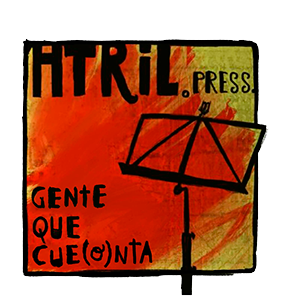
Who knows what her thoughts were when she was embroidering that handkerchief back in the 1920s, in a small town in Germany, on the shores of the Baltic.
Even more mysterious is how that very white handkerchief, immaculately folded into a triangular shape, came into my hands.
It had to escape the war, cross borders and navigate oceans, Holland, England, to finally fall into my very Venezuelan hands.
It was embroidered by Tante (aunt in German) Elizabeth, my mother-in-law’s late sister, who one day, back in her little house in Wales, gave it to me.
I have faithfully kept it on my nightstand ever since.
Until last weekend.
My five-year-old granddaughter Natalia stayed the night with me.
Restless, in the early morning she tossed and turned. I noticed her congested. Since neither of us could sleep I told her:
– Do you want to blow your nose?
She nodded.
Without turning on the light, by touch, I tried to find a tissue on my nightstand, but nothing.
Then the languid handkerchief appeared. I passed it to her.
She touched it in amazement and asked me:
– Has anyone else used it?
And I told her:
– Not in the last hundred years.
Natalia blew her nose as if her life depended on it.
He handed me the damp and wrinkled handkerchief. I dropped it on the nightstand, crushed, liberated and happy, with a feeling of mission accomplished, that’s what I thought.
Tante Elizabeth would never have imagined that, almost a century later, the handkerchief she had embroidered would wake up from its long sleep, on another continent, on the nose of the sweetest girl in the world.
Even the most trivial things find their reason and their destiny. The handkerchief remained there, in perfect rest.
Like the one I thought would be ours when suddenly I heard a little voice saying:
– Nana, do you know how to say handkerchief in Japanese?
– No, I said.
– Sakamoko!
We had a fit of laughter and then succumbed to the sweetest of dreams.
Tante Elizabeth will be happy.

Leonor Henríquez (Caracas, Venezuela) Civil Engineer by training (UCAB 1985), writer and apprentice poet by vocation. From her time in engineering emerged her Office Stories (1997), another way of seeing the corporate world. Her latest publications include reflections on grief, Hopecrumbs (2020) (www.hopecrumbs.com) and “The Adventures of Chispita” (2021) (www.chispita.ca) an allegory of life inside Mom’s belly.
Today she shares her “impulsive meditations” from Calgary, Canada, where she lives.
leonorcanada@gmail.com
